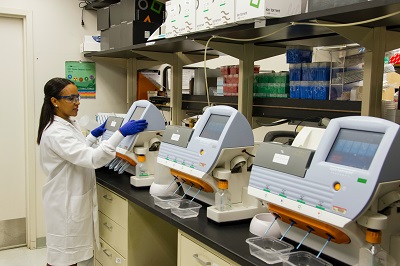To apply for Class C medical device registration in Indonesia with the Ministry of Health (MOH) through BPOM (Badan Pengawas Obat dan Makanan), the process involves several key steps to ensure that the medical device meets the safety, quality, and regulatory standards required for the Indonesian market.
Below is a detailed guide on how to apply for Class C medical device registration in Indonesia:
1. Understand the Regulatory Requirements
Before starting the application process, it's important to understand the specific regulatory requirements for Class C medical devices in Indonesia.
Class C devices: These are moderate-risk devices that typically include items like diagnostic equipment, surgical instruments, and therapeutic devices. The registration process for Class C devices requires more detailed technical and clinical data to demonstrate safety and efficacy.
BPOM: The Badan Pengawas Obat dan Makanan (Indonesian Food and Drug Authority) is responsible for the regulation and approval of medical devices in Indonesia.
Local Representation: If you are an overseas manufacturer, you must appoint a local authorized representative or distributor in Indonesia who will handle the registration process on your behalf.
2. Appoint an Authorized Representative (if applicable)
If you are not based in Indonesia, you must appoint a local authorized representative or distributor who will act on your behalf for regulatory matters with BPOM. The authorized representative will be responsible for submitting the registration application and handling communications with BPOM.
- Requirement: The authorized representative should have legal standing in Indonesia and be registered with BPOM.
3. Gather Required Documents
Prepare the necessary documents for registration. For Class C medical devices, the required documentation generally includes:
Device Description:
- Detailed description of the device, its intended use, and classification.
- Technical specifications and how the device works.
Manufacturer Information:
- Company name, address, contact details, and other regulatory details of the manufacturer.
ISO Certifications:
- ISO 13485: Certification for the manufacturer’s Quality Management System (QMS) for medical devices.
- ISO 14971: Risk management documentation for the device.
Clinical Data (if applicable):
- Clinical trials or data to demonstrate the safety and effectiveness of the device.
- If clinical data is not available, a Justification Letter explaining why it is not required may be needed.
Good Manufacturing Practice (GMP):
- Proof of compliance with Good Manufacturing Practices for the manufacturing facility. This may involve a GMP certificate from a recognized authority or an inspection report.
Labeling Information:
- Labels and packaging that meet BPOM’s requirements, including Bahasa Indonesia translations for labeling and instructions for use.
Declaration of Conformity:
- A document from the manufacturer stating that the product meets all relevant international standards and regulations.
Market Authorization Certificate (if applicable):
- If the device has been approved in another country, BPOM may require a market authorization certificate from the country of origin.
4. Submit the Application via BPOM e-Registration System
BPOM uses an electronic registration system (e-Registration) for medical devices. This system allows applicants to submit their registration applications online. Here are the key steps to follow:
Create an Account:
- If you do not have an account in BPOM's e-Registration system, you will need to create one.
Fill Out the Application Form:
- Complete the online registration application form, providing details about the device, manufacturer, authorized representative, and other required information.
Upload Documents:
- Upload all required documentation, including the device description, clinical data (if applicable), GMP certification, labeling, ISO certificates, and any other required forms.
Pay the Registration Fees:
- The BPOM system will prompt you to pay the applicable registration fees. Payment is made through the online portal using a variety of payment methods.
5. BPOM Review and Evaluation
Once the application is submitted, BPOM will conduct a detailed review of the application. This process involves:
Document Verification:
- BPOM will check if all documents are complete and in compliance with their requirements.
Technical and Scientific Review:
- BPOM will review the technical specifications of the device, the clinical data (if applicable), risk management documentation, and the GMP certificate.
GMP Inspection (if applicable):
- If the manufacturing facility is located outside Indonesia, BPOM may require a GMP inspection. BPOM may either conduct this inspection or accept GMP certification from recognized health authorities (e.g., FDA or EMA).
Additional Information:
- BPOM may request additional information or clarifications during this stage. Make sure to respond promptly to avoid delays in the process.
6. Marketing Authorization (NOM)
If the application meets BPOM's requirements, BPOM will issue Marketing Authorization (NOM) for the device, which is essentially the approval to market the device in Indonesia. BPOM will issue:
- NOM Certificate: This document certifies that the device has been approved for sale and distribution in Indonesia.
- Registration Certificate: A certificate confirming the device’s registration status with BPOM.
7. Post-Market Surveillance and Compliance
Once your medical device is approved and marketed in Indonesia, you are required to maintain post-market surveillance and comply with ongoing regulatory requirements:
Adverse Event Reporting:
- If any serious adverse events or device malfunctions occur, BPOM must be notified immediately. A report must be submitted to BPOM, along with any corrective actions taken.
Periodic Reports:
- Manufacturers must submit periodic post-market surveillance reports to BPOM, including information on device performance, complaints, and corrective actions taken (if applicable).
Device Recalls:
- If there are safety concerns or issues with the device, BPOM may instruct a recall of the device from the market.

Whatsapp or Wechat:+86 15816864648;email address:hito.lin@grzan.cn
.png)
.jpg)
.png)

.png)